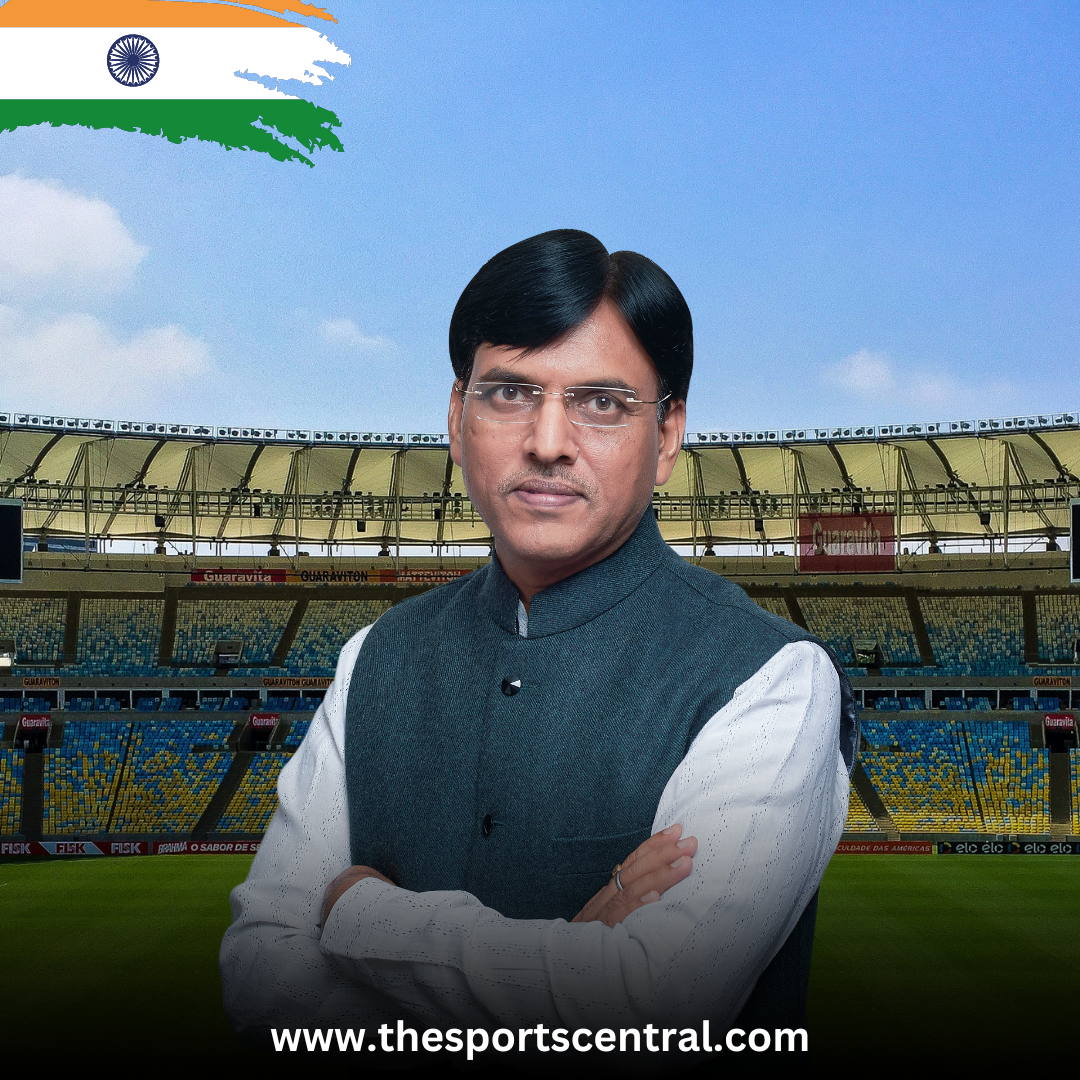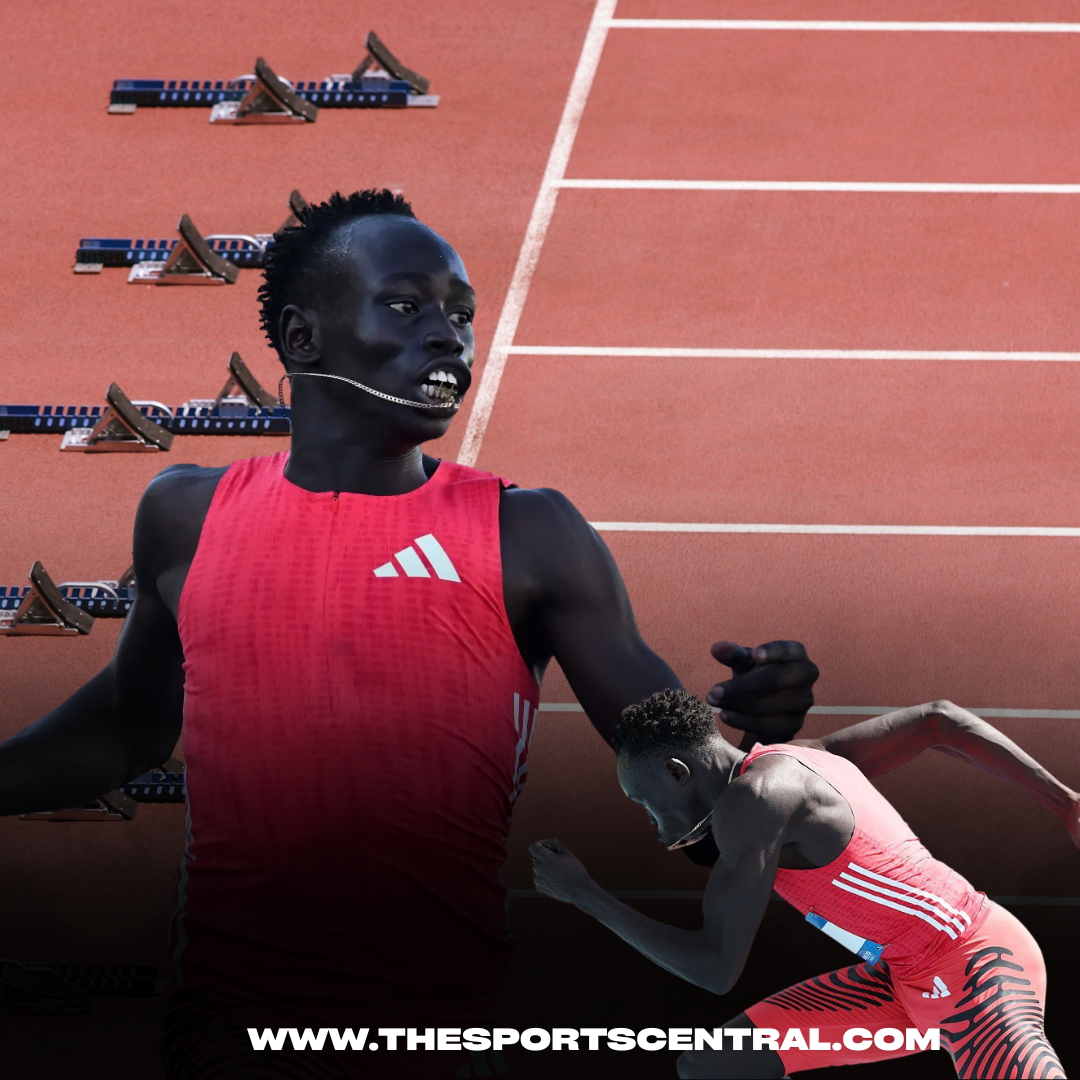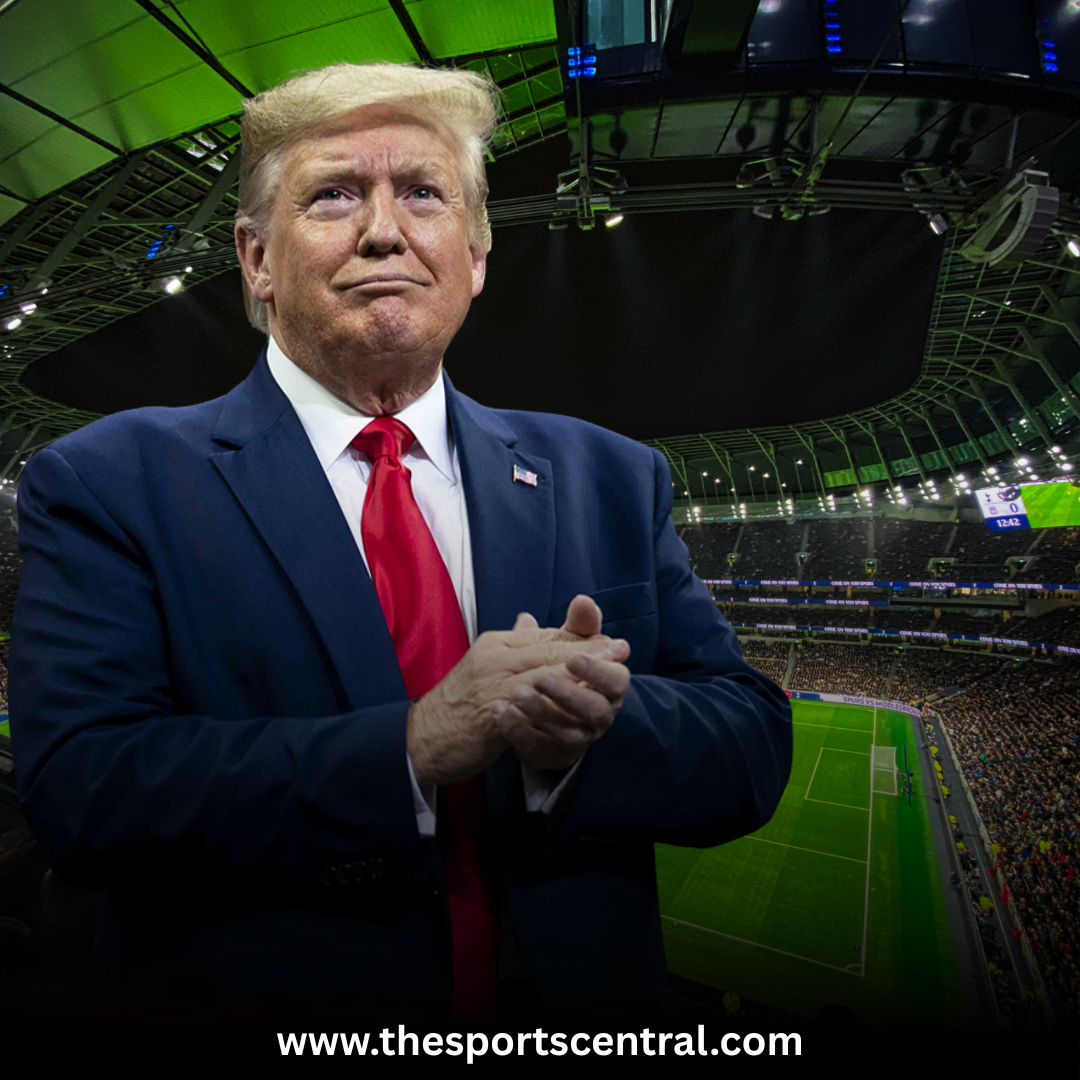India, a nation that has historically been recognized for its cultural diversity, rich heritage, and large population, is now aiming to make its mark on the global sports stage. Union Sports Minister Mansukh Mandaviya recently shared the nation’s ambitious vision for sports as part of India’s larger goal of becoming a developed nation by 2047. During the International Youth Seminar on Rising with Kindness at Kanha Shanti Vanam, Mandaviya outlined plans to elevate India to the top five sporting nations by 2047 and to host the 2036 Olympics. This article delves into India’s roadmap for achieving these goals, examining the policies, initiatives, and efforts currently in place to drive the nation’s sporting future.
The Vision for Indian Sports by 2047: A Developed Nation
India’s quest to become a global sports superpower by 2047 is part of the broader vision of transforming the country into a developed nation by the same year. This transformation will require a multifaceted approach, encompassing economic growth, technological advancement, social reform, and cultural evolution. In this context, sports play a pivotal role in shaping national identity and global perception, contributing to societal development, fostering unity, and promoting physical fitness among the population.
According to Mandaviya, the government is working towards a vision for the next 25 years, aligning sports development with the country’s overall growth. The goal is to make India one of the top five countries in the world in terms of sporting achievements, with a focus on producing world-class athletes, improving infrastructure, and hosting prestigious international sporting events, such as the Olympics.
Hosting the 2036 Olympics: A Dream for the Nation
One of the most ambitious objectives laid out by the Indian government is the bid to host the 2036 Olympics. Hosting the Olympics is not only a matter of national pride but also a significant opportunity to showcase India’s advancements in sports, infrastructure, and organization on the global stage. It would also serve as a catalyst for boosting sports culture and participation across the country.
India’s bid for the 2036 Olympics is in its nascent stages, but the Union Sports Minister has expressed optimism, stating that hosting such an event aligns perfectly with India’s 2047 development vision. Hosting the Olympics will require a tremendous amount of planning, investment, and coordination. This includes building or upgrading world-class sporting facilities, ensuring accommodation for athletes and spectators, developing transportation infrastructure, and implementing comprehensive security measures.
Additionally, the economic impact of hosting the Olympics could be immense. From tourism to job creation and from sponsorship deals to international trade opportunities, the Olympics could bring significant benefits to the country. However, the challenge lies in managing the scale of the event without incurring the massive debts that have plagued some other host countries. India’s government has indicated that it will take a prudent and calculated approach to the bidding and planning processes.
India’s Sports Ecosystem: Building a Foundation for Success
To achieve the lofty goal of becoming one of the top five sporting nations by 2047, India has been steadily building a robust sports ecosystem over the past decade. Several initiatives, schemes, and projects have been launched, each focusing on various aspects of athlete development, infrastructure, and international exposure. Below is a detailed look at some of the most notable programs driving this transformation.
1. Khelo India: Grassroots Sports Development
The Khelo India initiative, launched in 2018, has been one of the cornerstones of India’s sports development strategy. Aimed at promoting sports at the grassroots level, Khelo India provides a platform for young athletes across the country to showcase their talent, while also providing financial assistance and resources to help them develop their skills.
The program focuses on improving sports infrastructure in rural and urban areas alike, organizing training camps, and identifying talented individuals who can represent India in international competitions. Schools and colleges play a key role in identifying and nurturing young talent, making sports an integral part of the education system.
As part of the Khelo India Youth Games and Khelo India University Games, athletes across various age groups compete in multiple sports, gaining valuable experience and recognition. The government has committed substantial funding to this initiative, helping to foster a strong sports culture across the nation.
2. Target Olympic Podium Scheme (TOPS): Supporting Elite Athletes
While Khelo India focuses on grassroots development, the Target Olympic Podium Scheme (TOPS) is aimed at elite athletes who are competing at the highest levels. Launched in 2014, TOPS provides financial support, coaching, and international exposure to athletes who have the potential to win medals at the Olympics and other major international events.
Under TOPS, athletes receive personalized training programs designed by experts in their respective fields, access to world-class facilities, and the opportunity to train abroad. The scheme also ensures that athletes have access to the best sports science and medical support, including physiotherapy, nutrition, and mental health services.
In recent years, TOPS has proven to be a game-changer for Indian athletes. Many of the medal winners at the 2020 Tokyo Olympics, such as Neeraj Chopra (gold medalist in javelin throw) and P.V. Sindhu (bronze medalist in badminton), were beneficiaries of the scheme. With continued investment and focus on this program, India is expected to produce even more top-level athletes in the coming years.
3. KIRTI (Khelo India Rising Talent Identification): Identifying Talent at the School Level
Recognizing that the journey to becoming a world-class athlete often begins at a young age, the government has introduced KIRTI (Khelo India Rising Talent Identification). This project aims to identify and nurture sporting talent at the school level, ensuring that promising athletes are given the support they need from an early stage.
Under KIRTI, talented students are scouted by trained professionals and are given access to specialized training programs, scholarships, and the opportunity to compete in regional and national tournaments. The government covers the expenses associated with their training and development, including coaching, travel, and equipment.
By focusing on early talent identification, the government hopes to build a pipeline of athletes who can compete at the highest levels in the future. This initiative not only promotes sports at the grassroots level but also ensures that India has a steady stream of athletes ready to take on the world stage.
Youth-Centric Budget and Initiatives: Empowering the Next Generation
In line with the government’s vision for sports and youth development, the 2023 budget was highly youth-centric, with a financial outlay of Rs 2 trillion (approximately $25 billion) spread over five years. This allocation is aimed at supporting schemes and initiatives designed to facilitate employment, skilling, and other opportunities for the nation’s 4.1 crore (41 million) youth.
1. Mera Yuva Bharat (MY Bharat) Portal: A One-Stop Solution for Youth Empowerment
As part of its commitment to empowering young people, the government launched the Mera Yuva Bharat (MY Bharat) portal—a single-window platform designed to provide opportunities, resources, and support for the youth. The portal offers a range of services, including access to job opportunities, skilling programs, scholarships, internships, and sports-related resources.
The platform is designed to be user-friendly and accessible, ensuring that young people from all backgrounds can take advantage of the opportunities available. Whether it’s finding a job, improving skills, or pursuing a career in sports, MY Bharat serves as a hub for youth empowerment.
2. Production Linked Incentive (PLI) Scheme: Atmanirbhar Bharat Through Manufacturing and Employment
While the primary focus of India’s sports vision is on athlete development, the government is also working to promote economic growth and employment through its Production Linked Incentive (PLI) scheme. This initiative aims to make India self-reliant (Atmanirbhar) by boosting domestic manufacturing and creating jobs for millions of young people.
By incentivizing companies to produce goods in India, the PLI scheme is helping to create new employment opportunities for the youth, including those interested in sports-related industries such as manufacturing sports equipment, apparel, and infrastructure development.
The ripple effect of this initiative is expected to benefit the sports sector by providing affordable, high-quality equipment and infrastructure, which are essential for athlete development. Moreover, the PLI scheme aligns with the government’s broader goal of positioning India as a global manufacturing hub, further contributing to the nation’s economic growth.
The Role of Sports in National Development
Sports are more than just a form of entertainment or competition; they play a crucial role in the social, cultural, and economic development of a nation. By promoting sports, India is not only aiming to achieve international recognition but also to foster a healthier, more active society.
1. Promoting Health and Wellness
One of the most significant benefits of promoting sports at a national level is the improvement of public health and wellness. With the rise in sedentary lifestyles and related health issues, such as obesity, diabetes, and cardiovascular diseases, encouraging physical activity through sports is an effective way to combat these problems.
By investing in sports infrastructure and making sports more accessible to people of all ages, the government can encourage more individuals to lead active, healthier lives. This, in turn, reduces the burden on the healthcare system and improves the overall quality of life for citizens.
2. Fostering National Unity and Pride
Sports have the power to unite people from different backgrounds, cultures, and regions. In a country as diverse as India, where language, religion, and ethnicity can often divide people, sports offer a common platform for unity. The success of Indian athletes on the global stage brings the entire nation together, fostering a sense of pride and belonging.
Moreover, the achievements of athletes like Neeraj Chopra, Mary Kom, and P.V. Sindhu serve as inspirations for millions of young people across the country. Their stories demonstrate that with hard work, dedication, and the right support, it is possible to overcome obstacles and achieve greatness.
3. Boosting the Economy Through Sports Tourism and Events
Hosting major sporting events, such as the Olympics, Commonwealth Games, or World Cups, can have a significant economic impact. These events attract tourists, generate revenue, and create jobs in sectors such as hospitality, transportation, and retail.
India has already demonstrated its ability to successfully host large-scale sporting events, such as the 2010 Commonwealth Games in Delhi and the 2016 T20 World Cup. By continuing to invest in sports infrastructure and bidding for international events, India can position itself as a global hub for sports tourism, further boosting its economy.
Challenges and the Road Ahead
While India’s vision for sports development is commendable, there are several challenges that must be addressed to achieve these ambitious goals.
1. Infrastructure and Access
Despite significant progress in recent years, many parts of India still lack access to proper sports infrastructure. Rural areas, in particular, often have limited or no access to facilities such as stadiums, training centers, and coaching. Addressing this gap will be crucial for ensuring that talented athletes from all regions of the country can develop their skills.
2. Funding and Sponsorship
While the government has allocated substantial funding for sports development, private sector involvement will also be essential for sustaining long-term growth. Sponsorship deals, partnerships with corporations, and investment in sports academies and leagues will help provide the necessary financial resources to support athletes and promote sports at all levels.
3. Talent Identification and Development
While initiatives like Khelo India and KIRTI are helping to identify young talent, there is still a need for better scouting and development systems. Many talented athletes remain undiscovered due to a lack of exposure or resources. Creating a more comprehensive talent identification network and providing support for athletes from underserved communities will be critical for achieving success on the global stage.
Conclusion: A Bright Future for Indian Sports
India’s vision for sports development by 2047 is both ambitious and inspiring. With the right mix of government support, private sector involvement, and public engagement, the country has the potential to become a global sports powerhouse. Hosting the 2036 Olympics would be a monumental achievement and a testament to India’s growth and progress.
As the nation continues to invest in its sports ecosystem, from grassroots development to elite athlete support, there is no doubt that Indian athletes will continue to shine on the world stage. The journey to becoming a top-five sporting nation by 2047 is challenging, but with determination, strategic planning, and collective effort, India can achieve its goals and make sports a source of national pride for generations to come.










